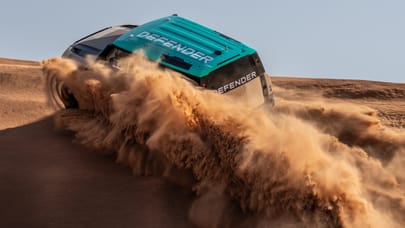
Nissan: we’d love to make the GT-R for another 17 years
The regulatory axe is poised to finally fall on JDM GT-Rs. We speak to Nissan about what comes next
“It’s still on sale – for the moment.” A lightly cryptic message from Nissan’s global product chief Pierre Loing when we bring up that most venerable of sports cars, the GT-R, which soldiers on in R35-gen form. “It’s been on sale for 17 years and we’d love to make it another 17 years, but the regulator gives us some trouble!”
Production is expected to finally wind up in Japan in 2025, several years after tightening rules stopped GT-R sales in Europe. So the burning question: does Pierre want to fill the gap that Godzilla leaves behind?
“It’s a good question. Of course I’d love to have something to fill the gap. But if you look at the history of the GT-R badge, we’ve had gaps before. We showed the GT-R concept in 2001, ended R34 Skyline GT-R production in 2002, then the R35 didn’t launch until 2007.
“The gap between the ‘Kenmeri’ Skyline GT-R ending in 1975 and the R32 starting in 1989 was even larger. The GT-R is strong enough to live with these gaps in its production. And we need to have a gap, because going into the electrified world, there is a lot of debate about ‘what is a GT-R in an era of electrification?’ We don’t have all the answers yet. We are in the middle of all those debates.”
Those debates being if the GT-R is a hybrid or full EV, and what role it plays as a halo car across the Nissan Cinematic Universe. A pure all-out performance assault, or a guiding light the rest of the models follow, as Nissan Europe lays down a strong EV-only timeline?
We suggest solid-state batteries, a subject Nissan has bold, publicised targets for, might be the secret to a fully electric GT-R making it to production. Perhaps one that resembles the striking Hyper Force concept…
“Every step is a breakthrough over what we can currently do with lithium-ion batteries,” says Pierre. “We are on par to do our first prototype solid-state battery by spring 2025. We’ll have a prototype vehicle two years later using real batteries then eventually by 2028 we want a vehicle which we will sell; probably in small numbers and in Japan to begin with.
“We are currently on time for this. I think it will work and solid-state technology solves a lot of the problems of EV batteries such as density, heat etcetera. Those vehicles with 150 or 200kWh batteries? It’s a nonsense – the weight, the cost, the big wheels and tyres and brakes that they need. Solid-state helps us break that cycle.”
So folks: what form do you reckon the next Godzilla should take?
Top Gear
Newsletter
Thank you for subscribing to our newsletter. Look out for your regular round-up of news, reviews and offers in your inbox.
Get all the latest news, reviews and exclusives, direct to your inbox.
Trending this week
- Car Review
BMW 1 Series
- Top Gear's Top 9
Nine dreadful bits of 'homeware' made by carmakers








